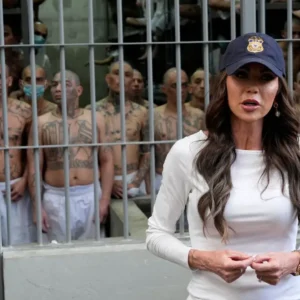Reshaping White House Press Access: Leavitt Defends Trump Administration’s Media Approach as “More Transparency” While Critics Raise Concerns
In a spirited exchange that highlighted the ongoing tensions between the White House and the traditional press corps, Press Secretary Karoline Leavitt vigorously defended the Trump administration’s controversial changes to media access protocols during a recent event hosted by Axios co-founder Mike Allen. The discussion offered a window into the administration’s media philosophy while raising fundamental questions about the relationship between government and the press in a rapidly evolving media landscape.
A New Approach to White House Coverage
Speaking at the Axios-hosted media forum, Leavitt characterized the administration’s modifications to longstanding press access arrangements not as restrictions but as expansions designed to diversify the voices covering the presidency. “I don’t view them as restrictions,” Leavitt stated firmly. “We view them as opening access to more outlets, more voices, more news, journalists and outlets.”
At the center of the controversy are changes to the traditional White House press pool system—a rotating group of 13 journalists who closely follow the president’s activities and share their reporting with the broader press corps. Historically, major wire services like the Associated Press maintained a permanent presence in this pool, ensuring consistent coverage that reached global audiences.
The Trump administration has altered this arrangement, implementing a rotation system that reduces the guaranteed presence of traditional news agencies while creating opportunities for digital outlets and alternative media organizations. This shift represents one of the most significant changes to White House press operations in decades and has generated substantial pushback from legacy media institutions and the White House Correspondents’ Association.
“We shouldn’t have a few outlets who have a monopoly over the briefing room or over that 13-person press pool that covers the president,” Leavitt argued. “There are thousands of outlets who have White House press credentials. There are hundreds that actually show up every day and cover the beat. Why should a single outlet have the privilege of being in that 13-person press pool every single day?”
According to Leavitt, the changes have “created more transparency, more accessibility, and greater access for a broad variety of outlets and a diversity of journalists.” She further suggested that these modifications reflect both the digital transformation of the media industry and President Trump’s unconventional approach to communication, noting that “the president ran a nontraditional media campaign, which propelled him back to the highest office in the land. And we felt it was our responsibility to continue that in our coverage at the White House.”
The White House Correspondents’ Association Pushback
The White House Correspondents’ Association (WHCA), which has traditionally played a key role in managing press access and advocating for journalists covering the administration, has been openly critical of these changes. In a statement referenced by Allen during the exchange, the WHCA asserted that “the government should not be able to control the independent media that covers it”—a principle that goes to the heart of press freedom concerns.





